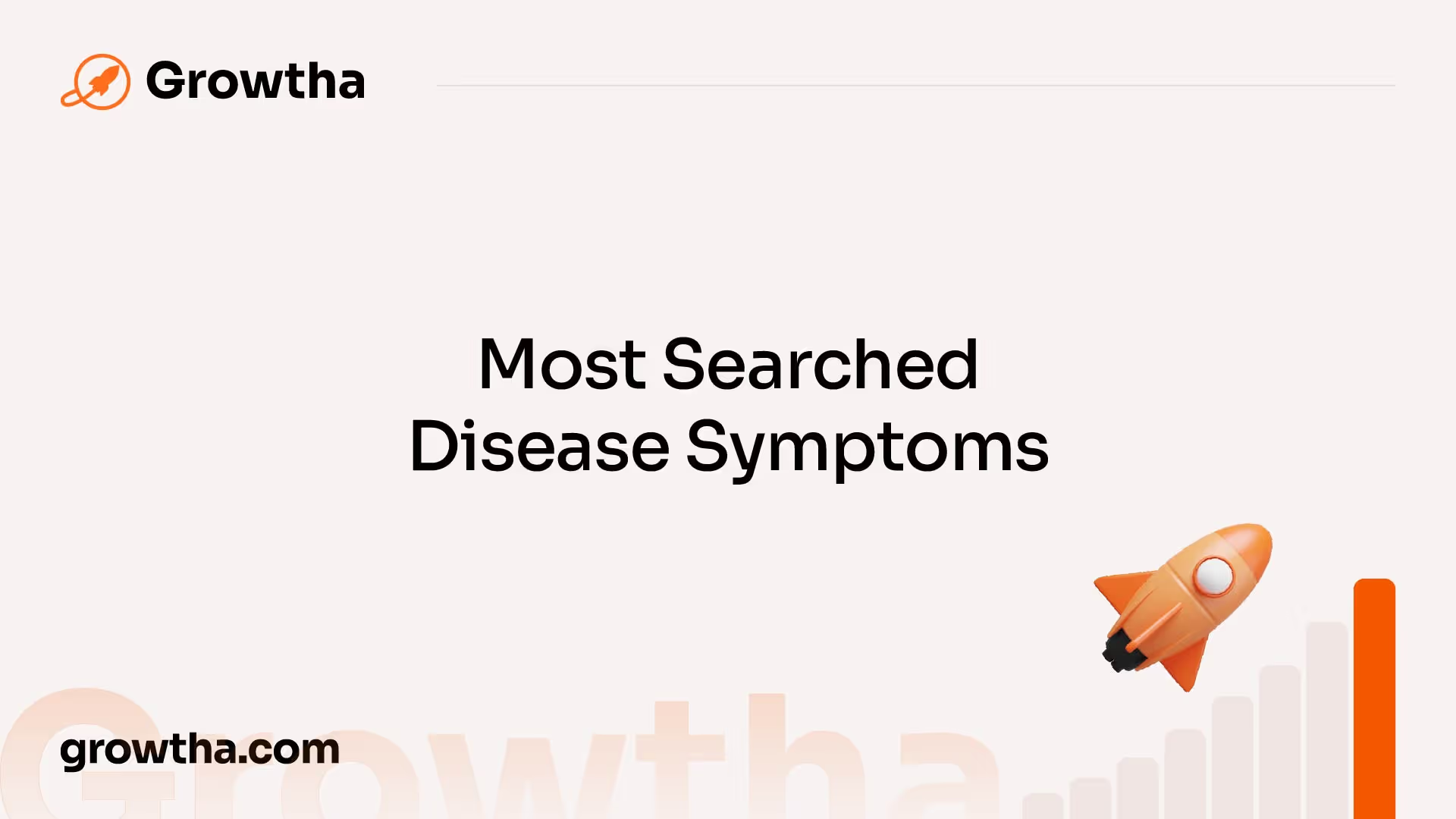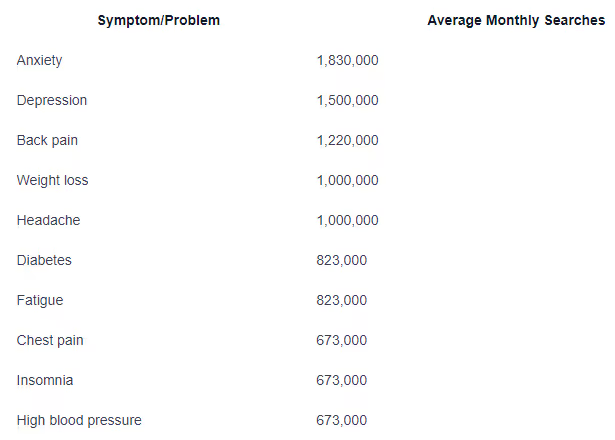Medical SEO Keywords: Your Pathway to Online Visibility and Success
With the majority of patients turning to search engines like Google or Bing to find medical practices, having a well-executed SEO strategy is essential.


Medical SEO Keywords: Your Pathway to Online Visibility and Success
Understanding Medical SEO
In the digital age, having a strong online presence is crucial for medical practices to reach and connect with potential patients. This is where SEO, or Search Engine Optimization, plays a vital role. SEO refers to the process of optimizing a website to improve its visibility and rankings on search engine results pages.
Importance of SEO in Healthcare
With the majority of patients turning to search engines like Google or Bing to find medical practices, having a well-executed SEO strategy is essential. It allows healthcare providers to increase their online visibility and attract relevant traffic to their websites.
Consider the fact that 72% of internet users have searched online for health information in the past year [2]. This highlights the importance of ranking high on search engine results pages to capture the attention of potential patients.
Ranking higher in search engine results not only increases visibility but also builds trust and credibility. Patients are more likely to contact medical practices that appear at the top of search engine results, as they perceive them to be reputable and reliable. In fact, 60% of Google traffic goes to the first three results, emphasizing the importance of a strong SEO strategy.
Impact of User Experience on SEO

An important aspect of medical SEO is providing a positive user experience on your website. Search engines prioritize websites that offer valuable and relevant content, as well as a seamless user experience.
Creating valuable content, such as service pages and blog posts, not only improves search engine rankings but also attracts and engages potential patients. Websites that regularly publish informative and insightful content establish themselves as authoritative sources in their respective medical fields. Posting blogs three times per week, for example, can contribute to higher rankings, as search engines favor sites that publish new content regularly [2].
Another crucial aspect of user experience is website performance. Slow-loading pages, broken links, or a lack of mobile optimization can negatively impact user experience and search engine rankings. Optimizing website performance ensures that potential patients can access information quickly and easily, improving their overall experience on the site.
In summary, implementing effective medical SEO strategies is crucial for healthcare providers to enhance their online visibility, attract relevant traffic, and establish credibility with potential patients. By understanding the importance of SEO in healthcare and optimizing user experience on their websites, medical practices can stay ahead in the digital landscape and connect with patients in a meaningful way.
Implementing Medical SEO Strategies

To achieve online visibility and success for your medical practice, implementing effective SEO strategies is essential. By optimizing your website and utilizing the right techniques, you can improve your rankings on search engine results pages (SERPs) and attract more relevant traffic. Here are three key strategies for medical SEO:
Keyword Research for Medical Practices
Keyword research plays a vital role in medical SEO. By identifying and targeting the right keywords, you can optimize your website to appear in search results when potential patients are looking for medical services or information. Patients tend to contact the top options they find on search engines like Google or Bing when searching for medical practices [1].
To find the most effective medical SEO keywords for your practice, start by understanding your target audience and their search intent. Consider the services you offer and the conditions you specialize in. Utilize keyword research tools to identify relevant keywords with high search volumes and low competition. These keywords should align with the topics and services you want to rank for.
Creating Valuable Content
Content creation is a crucial aspect of medical SEO. Creating valuable and informative content can improve search engine rankings and attract more patients to your website. By providing relevant and authoritative information, you can position yourself as a trusted source in your field.
When creating content, focus on addressing common patient questions, providing educational resources, and sharing insights about medical conditions and treatments. Develop service pages that highlight your expertise and showcase the benefits of your medical practice. Additionally, maintaining a blog with regular posts can help drive organic traffic and engage your audience.
Remember to optimize your content with relevant keywords to improve its visibility in search results. However, always prioritize creating high-quality, informative content that genuinely benefits your audience.
Building Quality Backlinks
Building quality backlinks from reputable sources is an important off-page SEO strategy. Backlinks are links from other websites that direct users to your website. Search engines consider backlinks as a vote of confidence and credibility for your website. Building a network of high-quality backlinks can enhance your medical practice's online presence and improve your search engine rankings.
To build quality backlinks, you can reach out to influential websites, medical associations, and local directories. Collaborating with other healthcare professionals and participating in guest blogging opportunities can also help you earn valuable backlinks. Ensure that the websites linking to your site are reputable and relevant to your medical practice. Quality backlinks from authoritative sources can significantly impact your SEO efforts.
By implementing these medical SEO strategies - conducting keyword research, creating valuable content, and building quality backlinks - you can enhance your online visibility, attract more patients, and establish your medical practice as a trusted resource in the healthcare industry.
Most Searched Medical Conditions

In the digital age, people turn to search engines like Google and Bing to seek information about various medical conditions. Understanding the most searched medical conditions can help healthcare providers tailor their content and SEO strategies to meet the needs of their target audience. In this section, we will explore the top Googled diseases in the U.S. as well as the most searched disease symptoms.
Top Googled Diseases in the U.S.
According to a report from STAT News, the top 20 most Googled diseases in the U.S. included:

Figures courtesy of STAT News
These rankings highlight the diseases that people are actively seeking information about online. Healthcare providers can optimize their online content to address these specific conditions, providing accurate and valuable information to those seeking it.
Most Searched Disease Symptoms

Understanding the most searched disease symptoms can also guide healthcare providers in creating SEO-friendly content. According to Statista, the most searched disease symptoms and healthcare problems in the United States between June 2018 and July 2019, based on average monthly searches, included:

Figures courtesy of Statista
These statistics demonstrate the common symptoms and problems that individuals are searching for online. By incorporating relevant keywords and information related to these symptoms into their website content, healthcare providers can increase their visibility and attract patients who are actively seeking solutions to their health concerns.
Understanding the most searched medical conditions and symptoms is vital for healthcare providers who want to enhance their online visibility and connect with potential patients. By aligning their SEO strategies with the information needs of their target audience, healthcare providers can position themselves as trusted sources of information and attract individuals who are seeking answers to their health-related queries.
Future of Healthcare Data

As technology continues to advance, the role of data in healthcare is becoming increasingly important. The utilization of big data and advancements in healthcare analytics are shaping the future of the industry.
Role of Big Data in Healthcare
Big data in healthcare encompasses various sources, including hospital records, medical examinations, and biomedical research data. Proper management and analysis of this data is necessary to derive meaningful information and improve healthcare services [3].
One significant application of big data in healthcare is the use of electronic health records (EHRs). EHRs have revolutionized patient care by improving access to medical history, reducing redundant examinations and errors, facilitating care coordination, and enhancing reporting of healthcare quality indicators.
Additionally, the integration and analysis of healthcare data from various sources, such as genomics data and data from Internet of Things (IoT) devices, can lead to improved health outcomes and better control of healthcare costs. IoT devices, in particular, generate a vast amount of health-related data that can be combined with other healthcare data for predictive analysis [3].
Furthermore, big data analysis plays a crucial role in understanding complex biological processes through the analysis of large amounts of data generated from omics studies, including genomics and transcriptomics. This knowledge can contribute to advancements in personalized medicine and precision healthcare [3].
Advancements in Healthcare Analytics
In order to extract meaningful insights from big data, healthcare analytics has witnessed significant advancements. Commercial platforms and tools, such as IBM Watson, Linguamatics, and Ayasdi, utilize machine learning and artificial intelligence algorithms to analyze and interpret healthcare data. These tools enable healthcare professionals to make informed decisions and derive valuable insights from the vast amount of available data.
The integration of healthcare data and advanced analytics allows for improved patient care, early detection of diseases, and more efficient allocation of resources. Healthcare analytics also enables the identification of patterns and trends that can aid in disease prevention and targeted interventions.
As the field of healthcare data continues to evolve, it is essential for medical practices to stay updated with the latest advancements in big data management and analytics. Embracing these technologies can lead to improved patient outcomes, enhanced healthcare services, and a more efficient healthcare system overall.
Addressing Physician Shortages
The healthcare industry is facing a significant challenge in the form of physician shortages. The United States is projected to experience a shortage of between 37,800 and 124,000 physicians by 2034, with a shortage of between 17,800 and 48,000 primary care physicians. This shortage is driven by the expanding and aging population, which requires more medical care and attention.
In-Demand Medical Specialties
Certain medical specialties are in high demand due to the growing need for specialized care. Family medicine consistently tops the list of in-demand specialties, followed closely by psychiatry. In recent years, psychiatry has seen a significant rise in demand, moving up from fourth place in 2018 to second place in 2022. Child and adolescent psychiatry also made its first appearance on the top ten list in 2022, ranking at number five.
In-Demand Medical Specialties
Family Medicine
Psychiatry
Emergency Medicine
Obstetrics and Gynecology
Figures courtesy Ross University School of Medicine
Family medicine physicians play a crucial role in providing comprehensive primary care to patients of all ages, focusing on preventive care, chronic disease management, and overall wellness. Psychiatrists, on the other hand, diagnose and treat mental, emotional, and behavioral disorders, utilizing treatments such as medications, psychotherapy, and other interventions. Their expertise covers a wide range of conditions, from depression and mood disorders to substance abuse and weight management.
Emergency medicine physicians are also in high demand, as they provide immediate medical treatment to individuals requiring urgent care for life-threatening injuries or conditions. They form an integral part of a team in hospital emergency departments, working swiftly to stabilize and provide necessary care to patients.
Obstetricians and gynecologists specialize in women's health, focusing on pregnancy, childbirth, and the treatment of reproductive system-related conditions and disorders. They play a vital role in ensuring the well-being of women before, during, and after their childbearing years.
Impact on Healthcare Services
The shortage of physicians has a significant impact on healthcare services. With fewer physicians available, patients may face challenges in accessing timely and quality care. Longer wait times, limited appointment availability, and increased healthcare costs are some of the consequences of physician shortages.
Addressing these shortages requires a multi-faceted approach, including efforts to increase the number of medical school graduates, expand residency programs, and incentivize physicians to practice in underserved areas. Additionally, healthcare organizations can optimize their online presence and visibility through medical SEO strategies, ensuring that individuals searching for healthcare services can easily find the information they need.
By understanding the specialties that are in high demand and the impact of physician shortages on healthcare services, healthcare organizations can better adapt and strategize to meet the needs of patients and provide optimal care.
Google's 2021 Algorithm Update
Google's 2021 algorithm update brings significant changes to how medical websites are ranked on search engine result pages (SERPs). The update emphasizes the importance of user experience (UX) and introduces key metrics that impact the visibility and performance of medical websites.
Key Metrics for Medical Websites
To ensure optimal rankings and visibility on Google, medical websites need to pay attention to several key metrics outlined in the algorithm update. These metrics include:
- Page Loading Time: The loading speed of a website is crucial for a positive user experience. The optimal page loading time for healthcare websites is 2 seconds, with an average of 5.4 seconds. Faster loading times can improve rankings on Google SERPs [5].
- Time to Interactivity: Websites should respond to user interactions within 50 milliseconds to enhance the time to interactivity metric. Removing unnecessary code and deferring the loading of non-critical elements can help improve this metric [5].
- Visual Stability: A visually stable website ensures that elements do not move around during loading, preventing user frustration. Tools like Chrome's User Experience Report, PageSpeed Insights, and Google Search Console can help detect and rectify issues such as unknown dimensions for images or videos, font rendering problems, and resizing by third-party ads or widgets [5].
- Mobile-Friendly Design: With 94% of users with smartphones searching for local information on their phones, it is crucial for healthcare websites to be mobile-friendly. Websites optimized only for desktops can lead to user frustration and high bounce rates. Ensuring a responsive design that adapts to different screen sizes and provides a seamless browsing experience across devices is essential [5].
Optimizing Website Performance
To optimize website performance and meet the requirements of Google's algorithm update, medical websites should focus on the following:
- Improve Loading Speed: Minimize the size of images and files, enable browser caching, and use content delivery networks (CDNs) to enhance loading speed. Regularly monitor and optimize the website's performance to ensure fast loading times.
- Enhance User Interactivity: Optimize code structure, defer non-critical scripts, and prioritize visible content to improve time to interactivity. Ensuring a smooth and responsive user experience contributes to higher user engagement.
- Ensure Visual Stability: Review and fix any issues related to visual stability, such as images or videos without specified dimensions. Address font rendering problems and avoid resizing caused by third-party ads or widgets.
- Prioritize Mobile-Friendly Design: Adopt a mobile-first approach when designing and developing medical websites. Ensure that the website's layout, content, and features are fully accessible and user-friendly on mobile devices. Test the website on different screen sizes to ensure a seamless experience for mobile users.
By focusing on these key metrics and optimizing website performance, medical websites can improve their online visibility and provide a positive user experience that aligns with Google's 2021 algorithm update. Staying up-to-date with SEO best practices and continuously monitoring and optimizing website performance will help healthcare providers and organizations thrive in the competitive online landscape.
References
[1]: https://seo.ai/blog/seo-for-medical-practices
[3]: https://journalofbigdata.springeropen.com/articles/10.1186/s40537-019-0217-0
[4]: https://medical.rossu.edu/about/blog/what-are-the-most-in-demand-physicians
[5]: https://www.medicalwebexperts.com/blog/what-googles-2021-algorithm-update-means-for-medical-websites-the-7-metrics-you-need-to-know/







